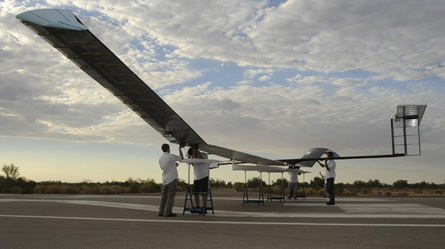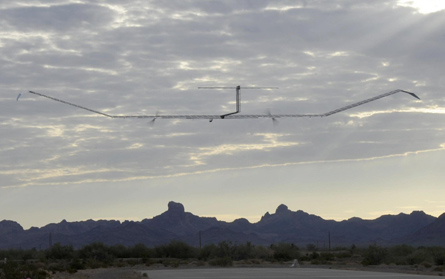Qinetiq's attempted record-breaking flight with the Zephyr high-altitude, long-endurance unmanned air system concluded on 23 July, when the aircraft landed after spending 14 days and 21min in the air.
The solar-powered UAS had been hand-launched from the US Army's Yuma test range in Arizona on 9 July (pictured below).
 |
|---|
|
|
Both images © Qinetiq |
It was brought back down to the ground after "achieving the objective of the trial and setting a number of performance and altitude records", Qinetiq says.
The previous official endurance record for a UAS flight was 30h 24min, achieved by a Northrop Grumman RQ-4 Global Hawk. An earlier version of the Zephyr logged an 82h 37min sortie in 2008, but this was not officially recorded.
"We've now proved that this aircraft is capable of providing a cost-effective, persistent surveillance and communications capability measured in terms of weeks, if not months," says Neville Salkeld, managing director of Qinetiq's UK Technology Solutions Group. "It is also significantly more cost effective to manufacture and deploy than traditional aircraft and satellites," he adds.
Qinetiq says its "production-ready" Zephyr airframe was flown carrying a communications payload "configured to meet the needs of the UK Ministry of Defence".
The air vehicle, which has a wing span of 22.5m (73.8ft) and a maximum take-off weight of 50kg (110lb), could be deployed for sorties lasting several months in duration and flown above 60,000ft, the company says.
Source: Flight International



























